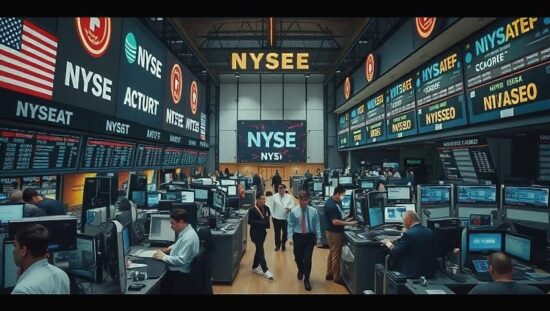The US stock markets experienced a sharp downturn Friday, signaling escalating tensions in the ongoing trade conflict with China. The Dow Jones Industrial Average closed at 45,480 points, a decrease of 1.9% from the previous day’s close. The broader S&P 500 registered a 2.7% decline, settling around 6,553 points, while the Nasdaq 100 plunged 3.5% to approximately 24,222 points.
This market volatility stems directly from the renewed hostilities in the US-China trade relationship. Beijing has responded to Washington’s recent imposition of fees on large Chinese vessels entering US ports with reciprocal levies targeting vessels owned by American companies and individuals. This tit-for-tat escalation follows China’s earlier announcement concerning potential restrictions on exports of crucial ‘rare earth’ materials and a halt to US soya imports – actions widely interpreted as retaliatory measures.
The response from US President Donald Trump was swift and bellicose. In a statement released via his personal platform, Trump signaled further punitive measures, explicitly mentioning “a massive increase in tariffs on Chinese products” entering the United States, alongside a commitment to explore “many other countermeasures”. Analysts are interpreting this rhetoric as indicative of a hardening stance, potentially pushing the trade war into a more unpredictable phase.
The Euro strengthened against the US dollar, trading at $1.1615, reflecting investor flight to perceived safe-haven currencies amid the economic uncertainty. Gold prices also saw a boost, with a fine ounce fetching $4,012, demonstrating a pattern of investment diversion from equities. Conversely, the price of Brent crude oil plummeted, falling to $62.80 a barrel – a decrease of 3.7% – attributed to fears of reduced global demand stemming from the trade dispute.
The deepening trade conflict raises serious questions about the sustainability of global supply chains and the potential for long-term economic damage. The aggressive stance adopted by the Trump administration is drawing criticism from some quarters, with concerns raised about the collateral damage to businesses and the potential disruption to the global economy. The situation demands careful observation and a reassessment of trade policy strategies by both nations.





